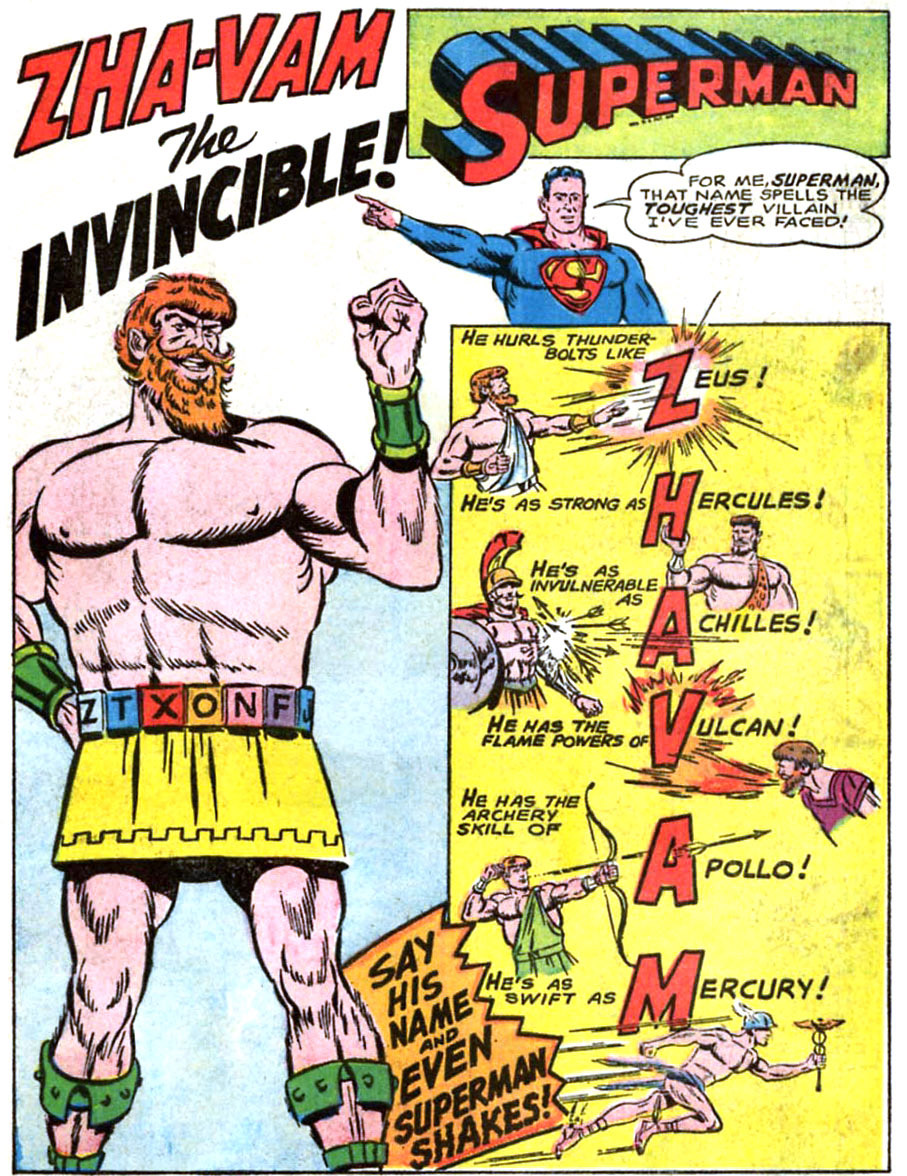The Heroes of Fawcett Comics
The Legacy of Fawcett Comics
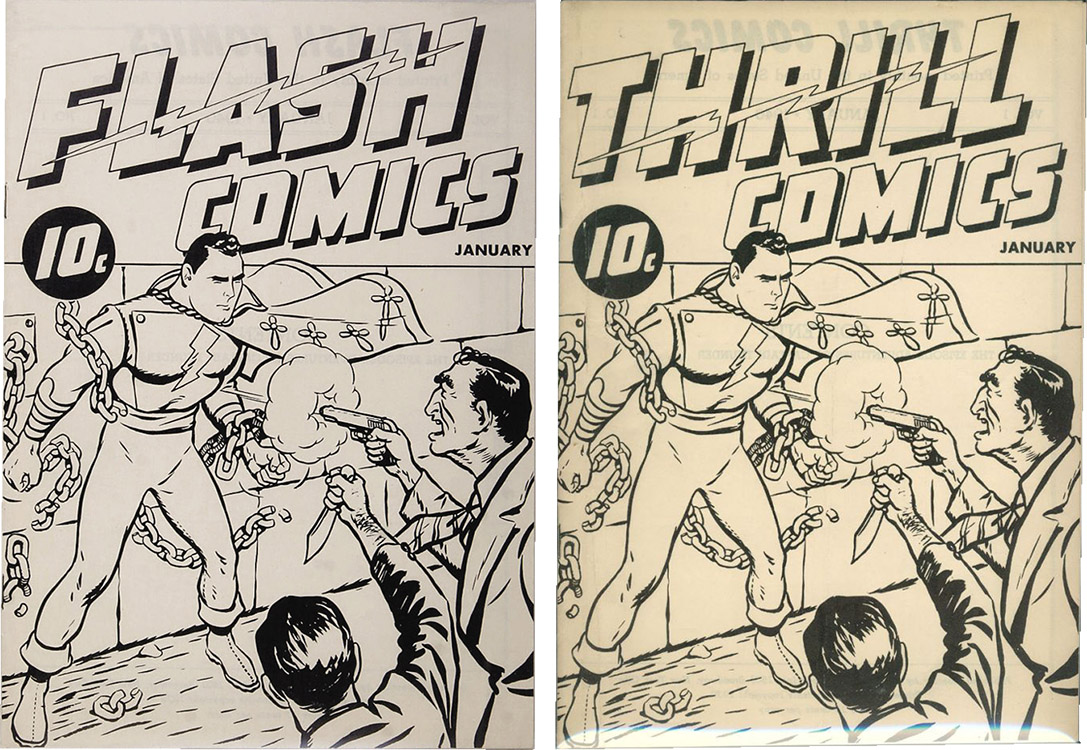
The Origin of Fawcett Comics and Captain Marvel


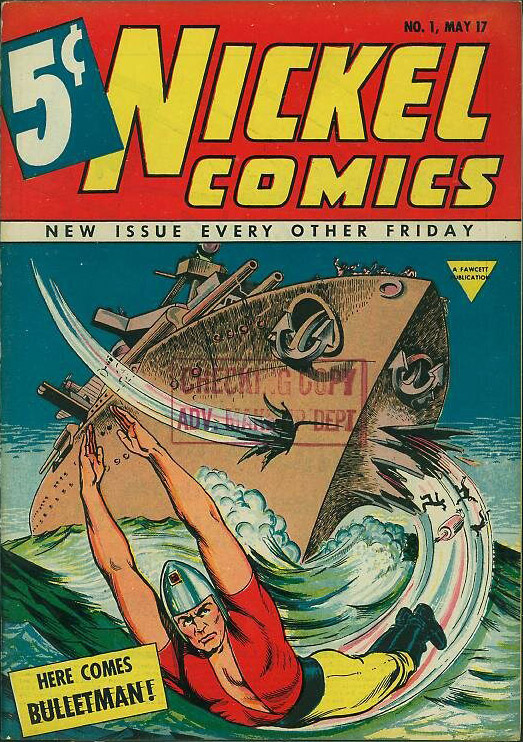
The scope of this project is to cover DC Comics' publishing of the Marvel Family and Fawcett characters. Cosmic Teams does not (at this time) attempt to comprehensively chronicle Fawcett Comics publishing. (But you'll still find lots of Golden Age info here!)
But — we offer the amazing 12-part series, "An Oral History of Captain Marvel." This is an incredible look at Captain Marvel's history by Zack Smith, who interviewed legendary creators about all things Cap. (It was orchestrated for Newsarama, but that site no longer hosts the articles.)
Real-World Origins
E. Nelson Bridwell wrote a text piece in Shazam! #1 (1973), titled "Shazam & Son." He reintroduced Captain Marvel to DC and talked about his creator, a writer and publisher named Bill Parker, who had turned out an idea for a hero named "Captain Thunder." This was 1939, an era of waxing 'Supermania,' and Parker's super-character combined the powers of six great gods and heroes. This name and its boy alter ego, Billy Batson, were homages to Fawcett's founder, Wilford Hamilton "Captain Billy" Fawcett (1885–1940).
Under his Fawcett Comics company (named after the Fawcett building in New York, where the company was based), Parker employed a common practice to secure the trademarks to a name: he rushed out black-and-white "ashcan" edition comics. The first ashcan was titled Flash Comics and another was Thrill Comics. Captain Thunder was not identified by name on the cover, but he was on the masthead inside.
But per the Grand Comics Database, Parker was too late to secure rights to "Captain Thunder, "Flash Comics" or "Thrill Comics"! Captain Thunder would be renamed as Captain Marvel. Instead, his hero — designed by artist Charles Clarence (C.C.) Beck — was rechristened "Captain Marvel" and appeared in Whiz Comics (#2). GCD notes confirm that the contents of the ashcan were reproduced for Marvel's origin story in that debut issue.
Accounts in the The Fawcett Companion (2001) address the name change to Captain "Marvel." Writer Otto Binder presumed that Bill Parker had named the character Captain Thunder, but that, "It might also have been [C.C.] Beck himself who suggested Marvel instead."
Ralph Daigh, Fawcett's Editorial Director, said plainly, "As to why the name of our hero was changed from Captain Thunder to Captain Marvel, I just thought it sounded better." But artist Pete Costanza recalled, "When the character's name was being changed from 'Captain Thunder' I suggested 'Captain Marvelous' instead. This was shortened to 'Marvel,' so I can't take all the credit.'"
A note about the early issue numbering of Whiz Comics: There was also (allegedly) an ashcan edition of Whiz Comics, which is why Captain Marvel's first formal comic book appearance was published in issue #2. Issues #2–5 are now generally regarded as #1–4. This is why you will see citations use absolute numbering in brackets, e.g., Whiz Comics #2 [1]. Perhaps knowing they had a hit on their hands, they decided to correct the numbering of the series. The third issue displays "Number 3" on the cover, but the indicia reads "Vol. 1, No 4", probably for legal reasons. The same holds true for the fourth issue. In the fifth issue, both cover and indicia read #5.
The title, Whiz Comics, was also a nod to the past, Fawcett's "bawdy humor magazine Captain Billy's Whiz Bang." (GCD)
Dive deeper into these early days:
- Begin reading "An Oral History of Captain Marvel" right here!
- Back Issue #30 (Oct. 2000; TwoMorrows) contains an extensive examination of this legacy.
- Alter Ego #23 (June 2003; TwoMorrows) features interviews with C.C. Beck and Marc Swayze.
- Alter Ego #138 (June 2016; TwoMorrows) features several feature articles about Fawcett.
- » SEE ALSO: Fawcett Bibliography
Fawcett Comics launched with five primary super-hero titles. Nickel and Slam-Bang were soon folded into Master Comics:
- Whiz Comics, 155 issues (1940–1953)
- Wow! Comics, 69 issues (1940–1948)
- Master Comics, 133 issues (1940–1953)
- Nickel Comics, 8 issues (1940)
- Slam-Bang Comics, 7 issues (1940)
Adding to the "Marvel Family"

A year-and-a-half later, Fawcett expanded Cap's universe beginning with a new series, Captain Marvel Adventures (Oct. 1941). After all ... if some is good, more is better! With the character's popularity came a succession of Marvel "family members," most of whom had access to super-powers as well. These occurred within the zeitgeist of the super-hero "sidekick," which accelerated after the creation of Robin, in Detective Comics #38 (April 1940).
Well over a year after Captain Marvel, Fawcett introduced a trio of additions to the Marvel Family. These were the "Lieutenant Marvels." When the villainous Dr. Sivana sent henchmen to capture Billy Batson (Cap's alter ego), they inadvertently snared three other boys with the same name: Tall Billy Batson from Texas, Fat Billy Batson from Brooklyn and Hill Billy Batson from Nashville. When all four Billys shouted "Shazam!" in unison, all became "Captain Marvels." But the others agreed there was only one real Captain Marvel, so they became his "second lieutenants." (The four were known for a time as the Squadron of Justice.) (Whiz Comics #21)
In 1941, a boy named Freddy Freeman was maimed by Captain Nazi. Captain Marvel took pity on him and shared his powers, creating Captain Marvel Jr. (Whiz Comics #25) Junior soon received his own series, too (Nov. 1942).
The next year, Billy learned that he had a long-lost sister, Mary Bromfield, who became Mary MarveI (Captain Marvel Adventures #18)
Hoppy was a bunny who lived in Animalville, a world of talking animals. He read Captain Marvel's comic book adventures, and when his girlfriend, Millie, was endangered, he tried the magic word and became Captain Marvel Bunny. (Fawcett's Funny Animals #1)
Mary's secret was discovered by a fat fellow named Dudley, who pretended to be her uncle — and even feigned super-powers as Uncle Marvel. Mary was amused by him and let him hang around. (Wow Comics #18)
And while he was a villain, Black Adam shared the lineage and costume design of Captain Marvel. He appeared only once in the Golden Age. (The Marvel Family #1)
Comicography of Golden Age Fawcett Comics
Fawcett's line of super-hero books expanded as that industry continued to explode:
- Captain Marvel Adventures, 150 issues, (1941–53)
- Captain Marvel Junior, 119 issues (1942–53)
- Captain Midnight, 67 issues (licensed character, 1942–48)
- Fawcett's Funny Animals, 83 issues (1942–54)
- Marvel Family, 89 issues (1945–54)
- Mary Marvel, 28 issues (1945–48)
- Hoppy the Marvel Bunny, 15 issues (1945–47)
The Marvel Family at DC (1973)

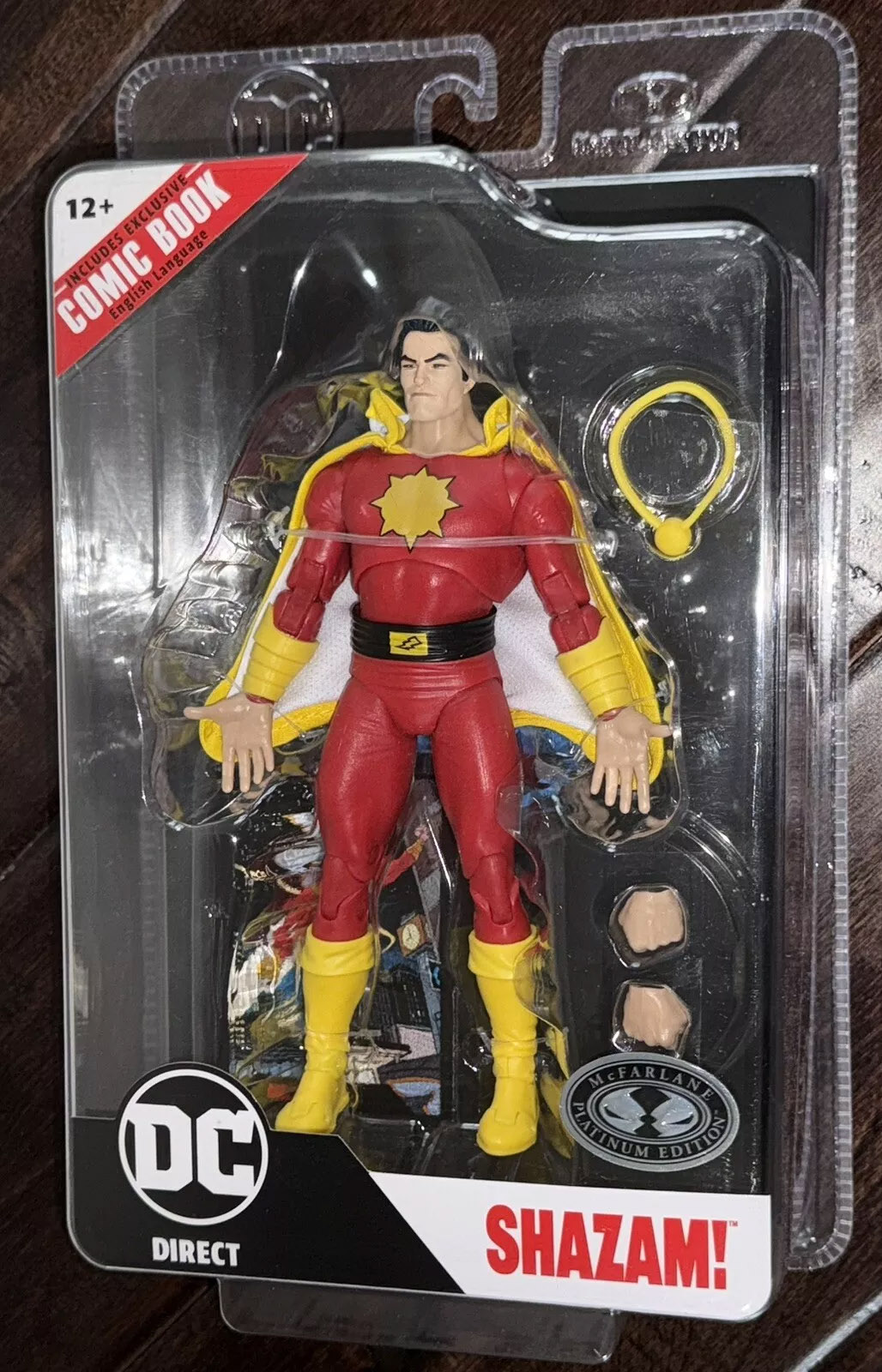
Homage Appearances
Fawcett ceased publication of its comic book line in 1953. This was in part because of DC's relentless lawsuit against them, for copying Superman, but also because the comic book market had dwindled significantly following puritanical public backlash against the medium. The last issue of Whiz Comics was #155 (June 1953).
Captain Marvel went dark in the U.S., but was retooled in the British market as "Marvelman," which continued publication into 1963.
During the "Lost Years," a couple of DC Comics stories paid homage to Captain Marvel:
- In Action Comics #353 (Aug. 1967), Otto Binder and Wayne Boring presented the powerful figure of Zha-Vam, who was created by the ancient Greek gods and possessed the powers of each!
- And in Superman #276 (June 1974), Superman fought Captain Thunder (by Elliot Maggin and Curt Swan). Thunder was from a parallel Earth and his alter ego was a boy named Willie Fawcett. He became stranded on Earth-One after an encounter with his enemies, the Monster League of Evil. Captain Thunder could access the powers of seven supernatural powers (whose initials spelled "THUNDER").
Shazam!: The Real Captain Marvel

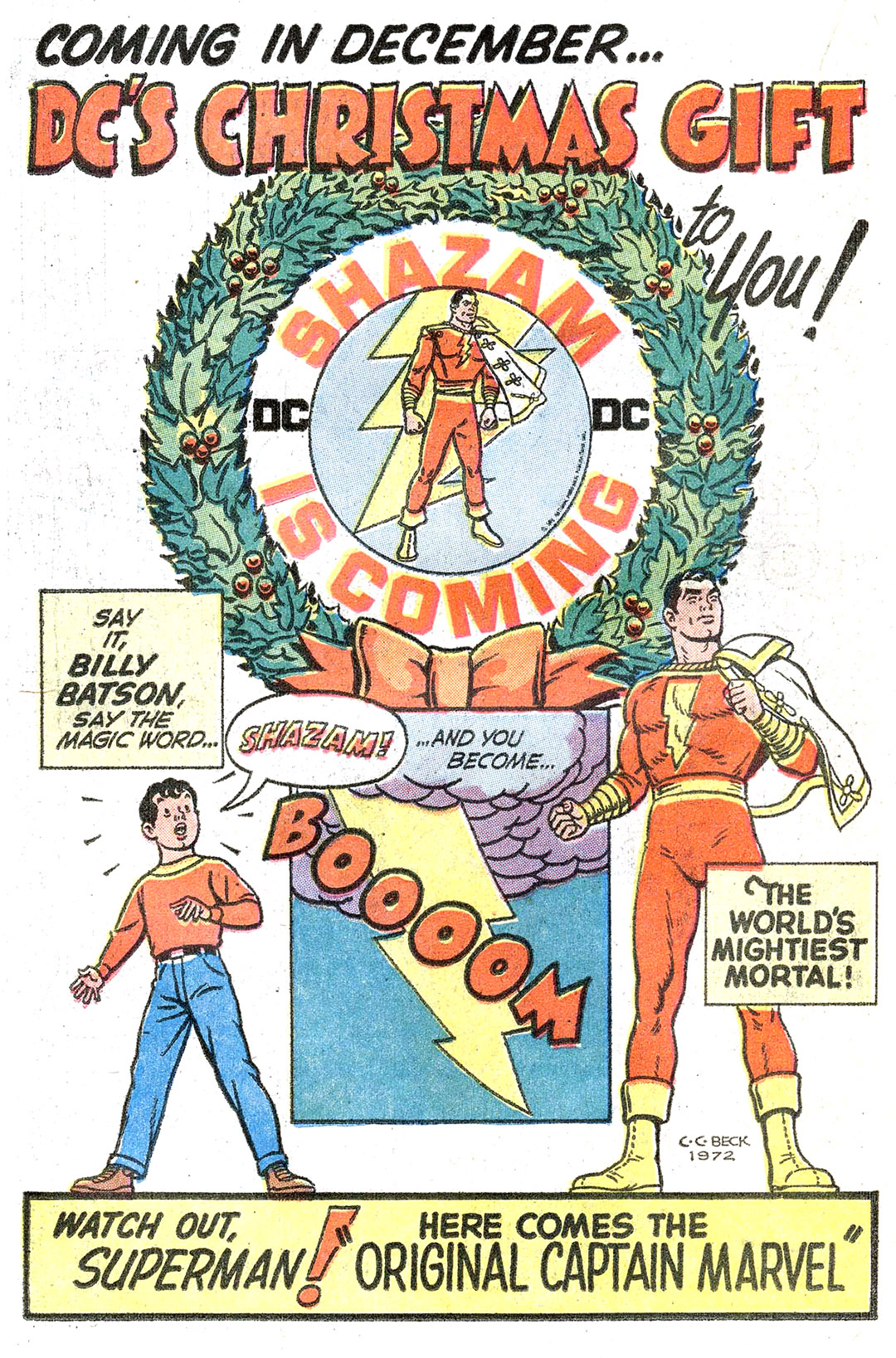



DC acquired Captain Marvel and the Fawcett Comics characters in 1972. Citing Wikipedia:
"In 1972 DC licensed — and in 1994, purchased — Captain Marvel and his related characters. Because of Marvel's trademark [to "Captain Marvel"], DC has instead used the trademark Shazam! as the title of their Captain Marvel-related comic books and thus the name under which they market and promote the character. In 1973, Shazam and the Marvel family became an additional Earth (to the Pre-Crisis DC continuity), known for a period of time as Earth-S."
The character was formally revived by DC Comics in late 1972, after the company purchased the properties from Fawcett (which had continued as a publisher of books and magazines into the 1970s).
The story from Justice League of America #103 (Dec. 1972) teased Captain Marvel's return. When Felix Faust attacked a Halloween celebration, several civilians who were wearing super-hero costumes were given super-powers. They included a Captain Marvel and even Captain America and Thor!
In that issue and several other DC comics published that month, a house ad formally heralded Captain Marvel's return — "SHAZAM IS COMING."
The first issue of the new series, titled Shazam!, was cover dated February 1973. DC also issued several tabloid-sized editions to reprint classic Fawcett stories, including the Limited Collectors' Edition #C-21 (1973), #C-27 (1974) and Famous First Edition #F-4 (1974), which reproduced Whiz Comics #2 in its entirety.
Inside the continuity of the DC universe, all Fawcett characters were said to live on a "parallel Earth" called Earth-S.
Amazingly, Cap's co-creator, C.C. Beck, agreed to return and produce new material for DC! Beck pencilled covers and features through the first ten issues. The letter column of issue #12 explained that Beck had left Shazam! to work on a "full-length novel."
Another prolific Fawcett artist, Kurt Schaffenberger, also worked on the series. He had come to DC way back in 1958 and established the signature style for a new series, Superman's Girl Friend, Lois Lane.
The Shazam! series was an anthology, with multiple stories per 36-page issue issue, many of them being reprints of Golden Age adventures. Denny O'Neil and Elliot S. Maggin handled the writing for most of the series' stories, until issue #25 when E. Nelson Bridwell took over a more streamlined book.
Outside of the Marvel Family, other Fawcett heroes were not used much. Fawcett had published many super-heroes but they had rarely appeared in groups. Some, like Minute Man, made appearances in DC's Shazam! and six of them were reintroduced in a team-up in Justice League of America #135–137 (1976).
DC's original strategy was to restore the charm of Marvel's original tales using their hallmark humor and memorable cartoon style. But by this time, comics had taken on a more serious tone and younger fans favored a more representational style of artwork.
The kid-friendly approach was phased out after a couple dozen issues. A house ad in Shazam! #34 proclaimed "a dynamic new look" for Cap and his friends, but this came just as DC's infamous "implosion" was looming. The series lasted only one more issue, but Captain Marvel relocated in 1978 to the the newly-expanded World's Finest Comics in issues #253–282.
There E. Nelson Bridwell and Don Newton carried on their adventures for four more years. The series cycled between the various members of the Marvel family, with guest appearances by their supporting cast and other Fawcett heroes.
To read more information about the DC/Fawcett war and DC's acquisition of the properties, check out:
- An Oral History: The Shazam! Years
- Wikipedia: Fawcett Comics
- Comic Book Urban Legends Revealed #12! (18 Aug. 2005)
Comicography of Pre-Crisis DC Comics:
- Shazam!, 35 issues (1973–78)
- Justice League of America #135–137 (1976)
- All-New Collectors' Edition #C-58 (1978)
- World's Finest Comics #253–268, 270, 273–276, 278-282 (1978–81)
- DC Comics Presents #33, 34, 49, Annual #3 (1981–82)
- Adventure Comics #491–492 (1982)
- All-Star Squadron #36–37, 51–52 (1984–85)
- Crisis on Infinite Earths #6, 7, 10, 11 (1985–86)
Post-Crisis (1986–2011)
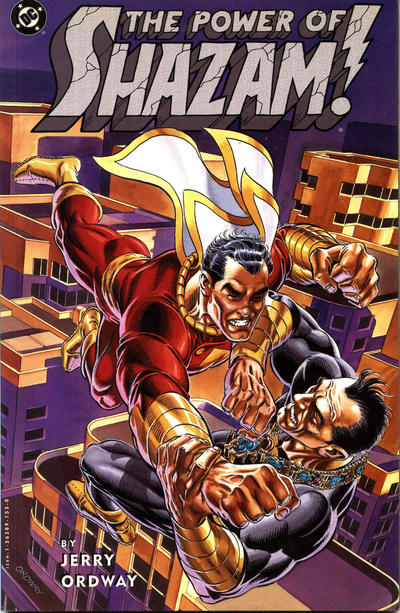


The Crisis on Infinite Earths collapsed all DC continuity onto a single Earth. Earth-S was no more; all Fawcett characters were "rebooted" and now lived alongside the other DC heroes.
Roy Thomas made the first attempt at a new Captain Marvel, first retelling his origin in Secret Origins #3 (June 1986). Then, in the 4-issue Shazam! The New Beginning (1987), Thomas and artist Tom Mandrake took Billy Batson in a contemporary direction, using Black Adam as his primary foe.
That version of Cap didn't stick and the character languished except for some guest appearances in Legends (1986) and the new Justice League (1987). The property had once again suffered from the gravitas of Captain Marvel's classic joie de vivre and an attempt at modernization.
Thomas' frequent collaborator, Jerry Ordway, came up with the right formula. Ignoring The New Beginning, Ordway wove strands of Fawcett history into The Power of Shazam! From 1994–1999, he reestablished the Marvel Family in the DCU and recontextualized original Fawcett tales. Ordway's Billy was lovable but strong and the series revived many other Fawcett characters.
After this series, Cap, Mary and Freddy were nudged more toward adulthood. When the Wizard perished, Cap assumed his role and Freddy became the primary champion, as "Shazam (II)." (Trials of Shazam) Mary was corrupted by Eclipso and Desaad in Countdown (2007).
Other projects during this period presented "Elseworlds" style (alternate reality) stories. These included Alex Ross and Paul Dini's treasury-sized Shazam! Power of Hope (2000); Shazam! The Monster Society of Evil, by Jeff Smith (2007); and the kid-oriented Billy Batson & the Magic of Shazam! (2008).
Comicography of DC Comics, Post-Crisis:
- Legends, 6-issue limited series (1986–87)
- Shazam! The New Beginning, 4-issue limited series (1987)
- The Power of Shazam! graphic novel (1994)
- The Power of Shazam!, 47 issues (1995–1999)
- Shazam! Power of Hope, treasury-sized special (2000)
- Just Imagine Stan Lee with Gary Frank Creating Shazam!, one-shot (2002)
- Formerly Known as the Justice League, 6-issue limited series (2004)
- Superman/Shazam: First Thunder, 4-issue limited series (2005–06)
- The Trials of Shazam, 12-issue limited series (2006–08)
- Outsiders: Five of a Kind — Katana / Shazam, one-shot (2007)
- Shazam! The Monster Society of Evil, 4-issue limited series (Elseworlds, 2007)
- Countdown to Infinite Crisis, 52-issue limited series (2007–08)
- Billy Batson & the Magic of Shazam! 21 issues (2008–10)
- Shazam! vol. 2, one-shot (Mar. 2011)
The New 52 + Rebirth (2011–)
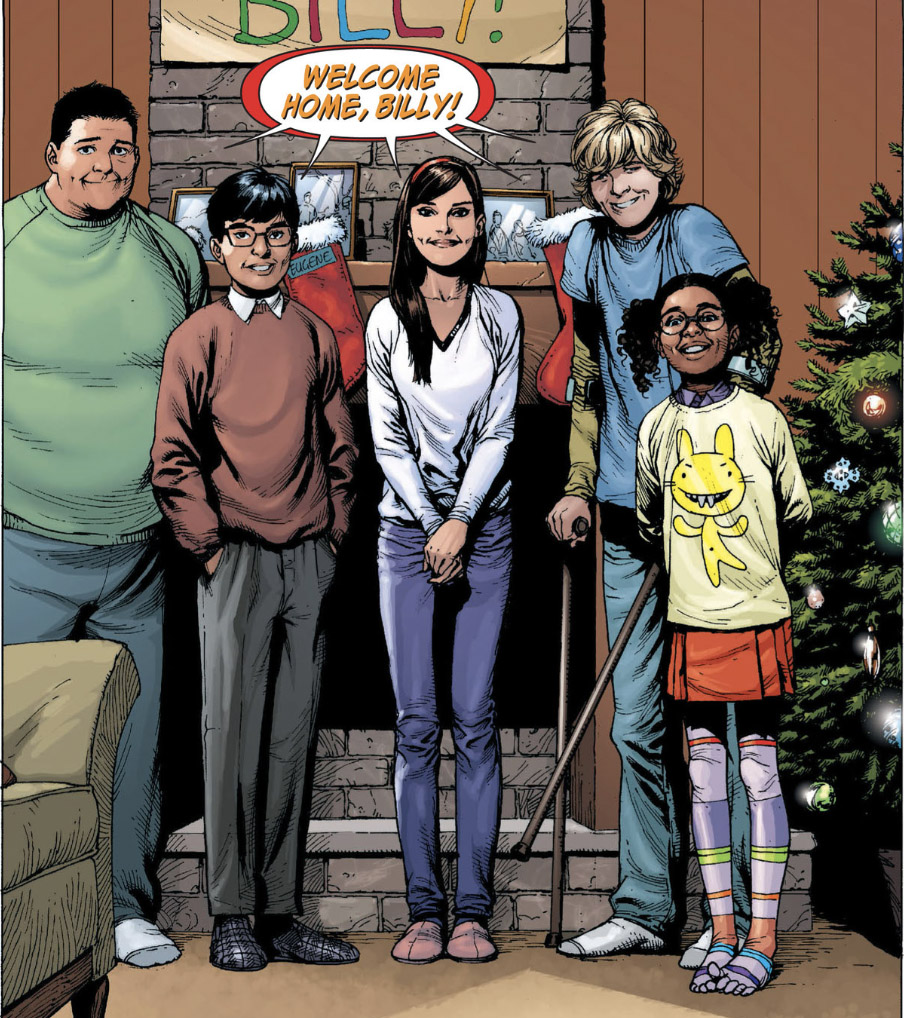
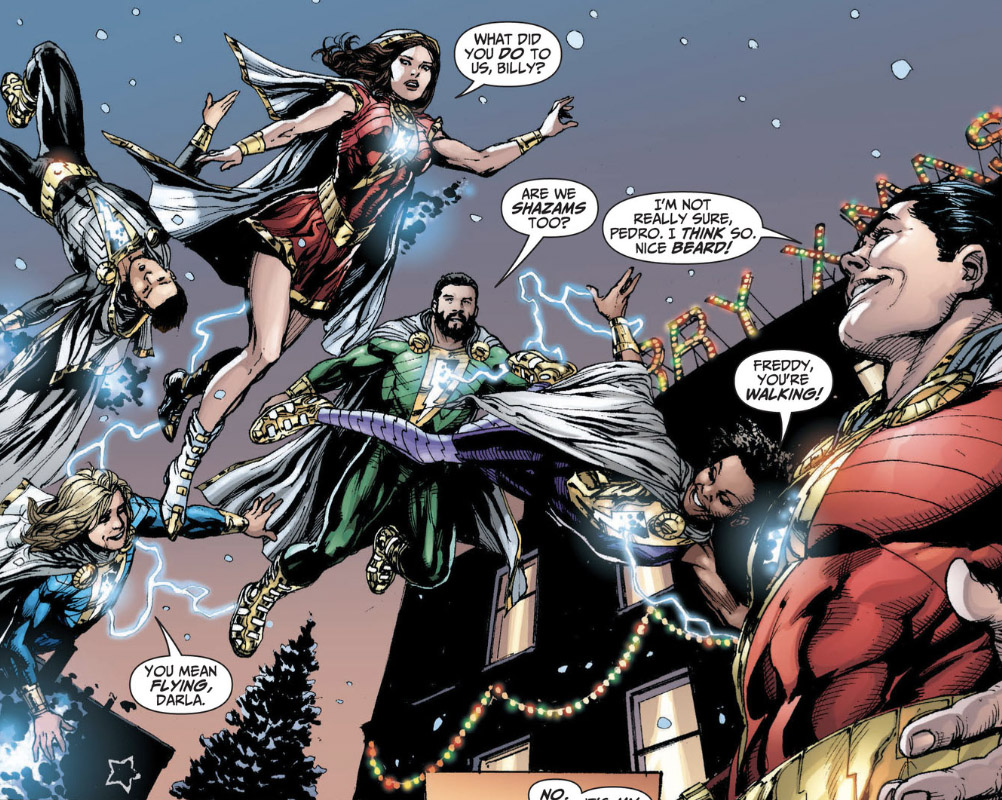
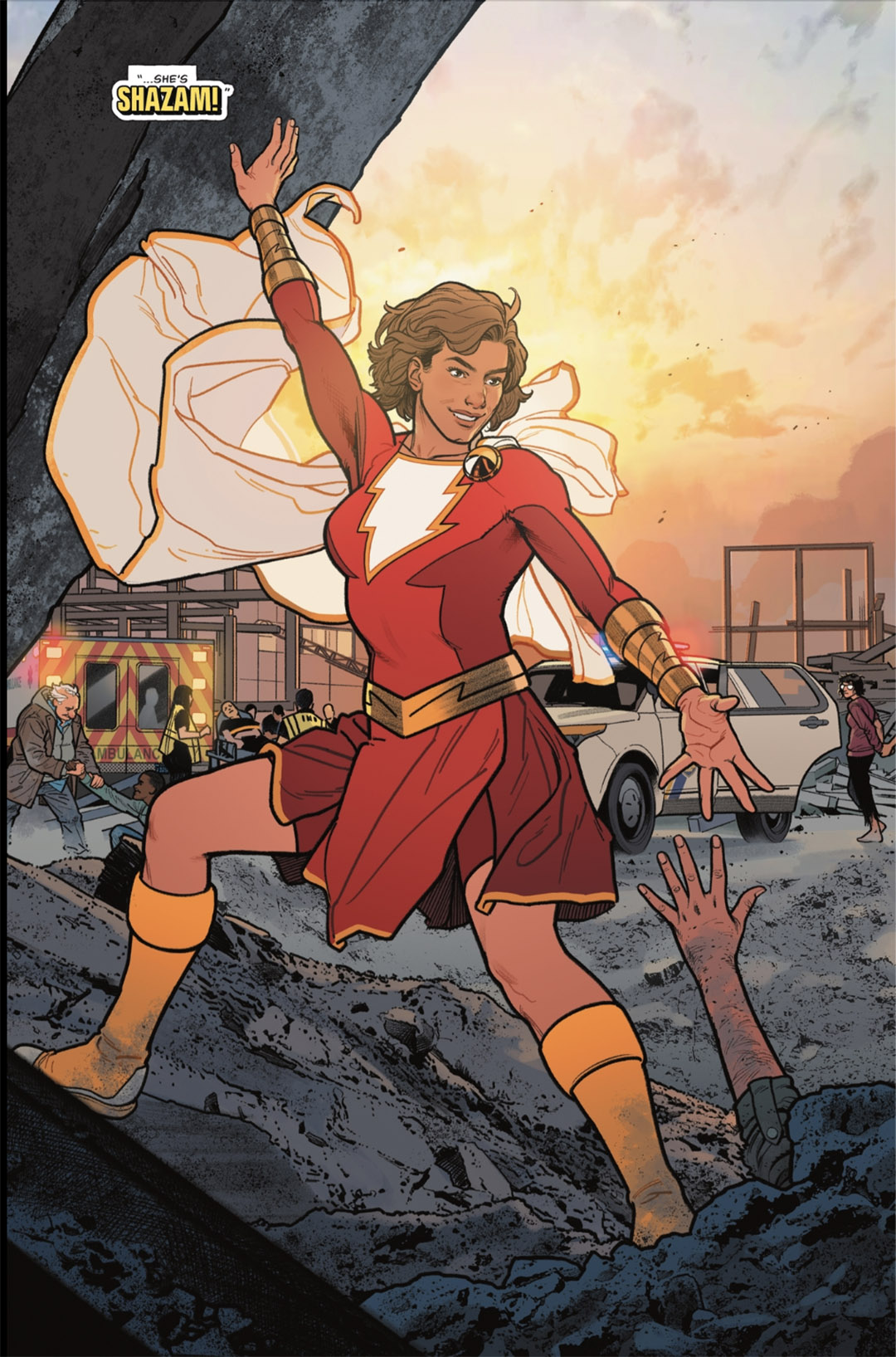


Geoff Johns and Gary Frank kicked off Cap's New 52 era by reintroducing and diversifying the Marvel Family in a backup feature for Justice League.
Billy Batson, Mary Bromfield and Freddy Freeman were now but three of six adopted children (adding Darla Dudley, Eugene Choi and Pedro Peña) in the Vasquez family, who lived in Philadelphia. Billy discovered that he could share his powers with all his family members (including a special tiger).
Johns had "previewed" this concept of the hero in Flashpoint (2011), set in an alternate reality.
From the outset, Billy's alter ego was "Shazam," not "Captain Marvel." (Marvel was due to use their Captain Marvel in movies in 2019.) He joined the Justice League following the "Forever Evil" event and remained until "Rebirth." (Justice League vol. 2 #30–52)
'Lost Earths' were explored in the Convergence event (2015). The two-issue Shazam story showed how life had progressed on Earth-S — where the Marvels had lost their powers.
Comicography of the DC Comics New 52 era:
- Shazam! (2013); reprints Shazam's New 52 origin story from Justice League #7–11, 0, 14–16, 18–21
- Convergence Shazam, 2-issue limited series (2015, Elseworlds)
- The Multiversity: Thunderworld Adventures #1 (2015)
- Justice League: Darkseid War: Shazam, one-shot (2016)
DC Rebirth (2016)
This was the era of the feature film, whose script leaned heavily into the New 52 version of the character. Shazam! the feature film starring Zachary Levi was released in 2019 and a sequel, Shazam!: Fury of the Gods, in 2023. While they were fun, the movies did not receive widespread acclaim.
In comics, a new series by Geoff Johns launched (Shazam! volume 3) with a magical adventure involving all six kids. Continuity for these characters remained steady from the New 52 into Rebirth, unlike most DC characters. After a brief stint in the Teen Titans Academy, Billy went to Hell (Shazam! volume 4), then retreated into the Rock of Eternity to guard some evil prisoners there.
The 2023 Shazam! series (volume 5) coincided with the release of the sequel. By Mark Waid and Dan Mora, it starred Billy Batson who started calling himself "The Captain." (He acknowledged that he'd previously gone by "Shazam" (II), which had "confused some people.").
Meanwhile, Mary starred in The New Champion of Shazam!, a limited series that followed her off to college. This ended with her also claiming the name "Shazam" (III). In the "Lazarus Planet" event, Billy and Mary allied with the Amazons to war against the gods themselves. Hippolyta (former queen of the Amazons and, now a goddess) then gifted Mary with her own set of powers: from Selene, Hippolyta, Artemis, Zephyrus, Aurora and Minerva (which mirrored Mary's Golden Age origin).
Comicography of the DC Rebirth era:
- Shazam! vol. 3, 15 issues (2019–2020)
- Shazam! Lightning Strikes, 2-issue digital-only series (2020)
- The Infected: King Shazam, one-shot (2020)
- Future State: Shazam!, 2-issue limited series (2021)
- Shazam! vol. 4, 4-issue limited series (2021); Cap goes to Hell
- Black Adam vol. 1, 12-issue limited series (2022)
- The New Champion of Shazam!, 4-issue limited series (2022); featuring Mary Marvel
- Knight Terrors: Shazam!, 2-issue limited series (2023)
- Lazarus Planet: Revenge of the Gods, 4-issue limited series (2023)
- Shazam! Thundercrack, one-shot (2023); graphic novel tie-in to the movie sequel
- Shazam! Fury of the Gods Special: Shazamily Matters, one-shot (2023)
- Shazam! vol. 5, (2023–)
